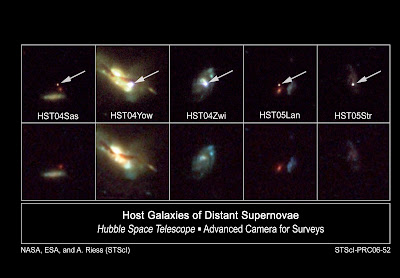Observations made by NASA's Hubble Space Telescope of a special type of supernovae contributed to research on the expansion of the universe that today was honored with the 2011 Nobel Prize in Physics.Adam Riess, an astronomer at the Space Telescope Science Institute and Krieger-Eisenhower professor in physics and astronomy at The Johns Hopkins University in Baltimore, was a member of a team awarded the Nobel Prize in Physics by the Royal Swedish Academy of Sciences.
The academy recognized him for leadership in the High-z Team's 1998 discovery that the expansion rate of the universe is accelerating, a phenomenon widely attributed to a mysterious, unexplained "dark energy" filling the universe. Critical parts of the work were done with NASA's Hubble Space Telescope.
Riess shares the prize with Saul Perlmutter, an astrophysicist at the University of California, Berkeley, and the Lawrence Berkeley National Laboratory, whose Supernova Cosmology Project team published similar results shortly after those published by Riess and High-z teammate Brian Schmidt of the Australian National University. Both teams shared the Peter Gruber Foundation's 2007 Cosmology Prize a gold medal and $500,000 for the discovery of dark energy, which Science Magazine called "The Breakthrough Discovery of the Year" in 1998.

No comments:
Post a Comment